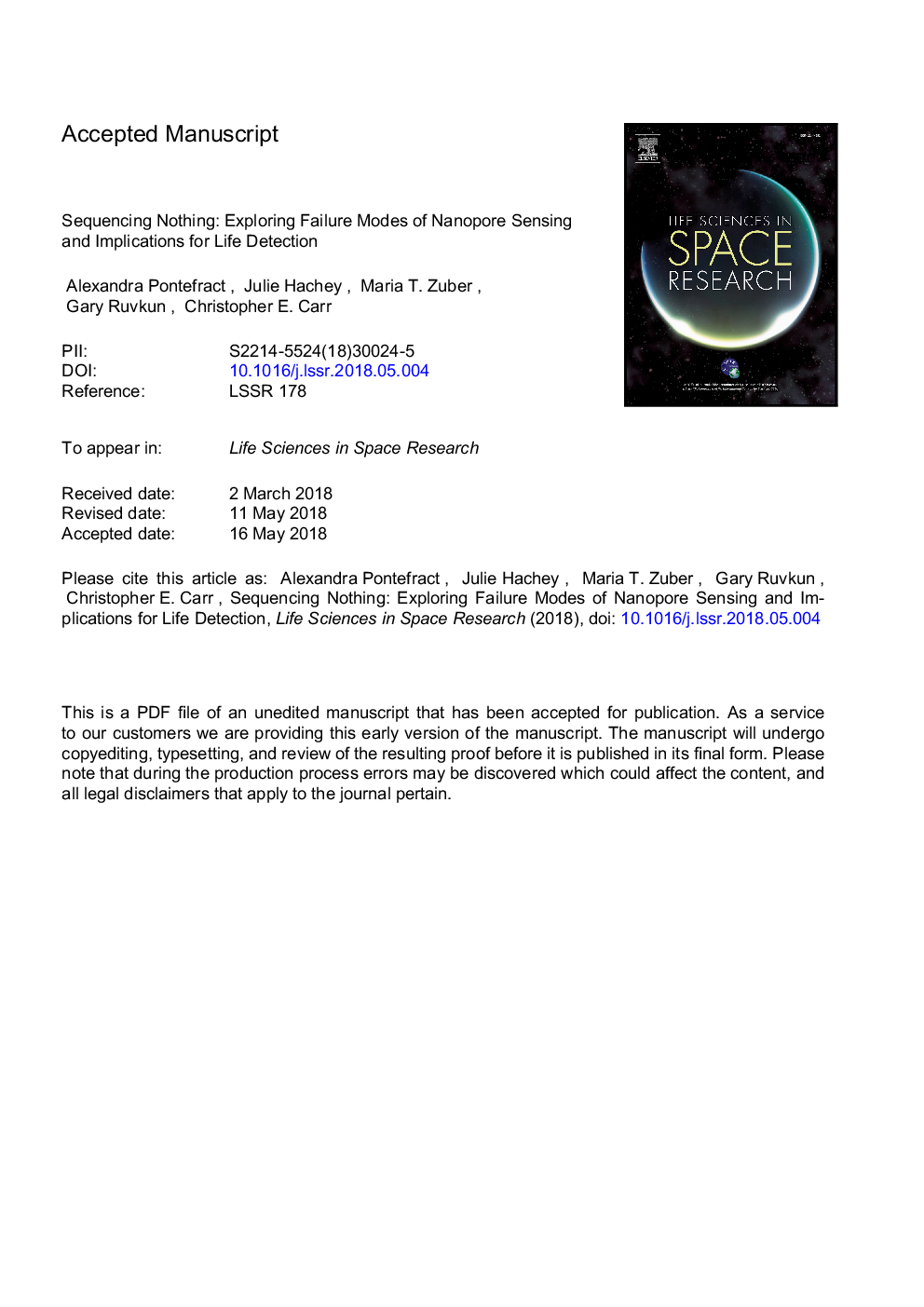| Article ID | Journal | Published Year | Pages | File Type |
|---|---|---|---|---|
| 8247909 | Life Sciences in Space Research | 2018 | 12 Pages |
Abstract
The detection of extant life is a major focus of many planned future planetary missions, a current challenge of which is the ability to target biomarkers capable of providing unambiguous evidence of life. DNA sequencing is increasingly recognized as a powerful tool for life detection for planetary exploration missions; beyond use of sequence information to determine the origins of the sample (e.g., extant life or forward contamination), recent advances in the field have enabled interrogation of single molecules, with or without amplification. The focus of this work is on failure modes, specifically the issues encountered when there is no-to-low input DNA into a sequencing device, and the potential for the generation of sequencing artifacts that could be interpreted as a false positive. Using Oxford Nanopore Technologies (ONT) MinION, we assess whether single molecule sequencing, involving no amplification, generates noise signals that could be misinterpreted in the context of a planetary exploration mission, and also whether the ability of the instrument to handle these types of situations could make it feasible for clean room monitoring. Utilizing quality score filtering techniques in place at the time of this experiment, runs containing only initial flowcell chemistry and/or library reagents generated 5 passing reads out of a total of 3568 measured reads, and contained estimated sequences with low complexity that did not map to the NCBI database. The noise characteristics in all instances suggest that quality thresholds were appropriately chosen by ONT: new chemistry and basecalling workflows have shown further suppression of noise sources, which completely mitigate the generation of spurious reads.
Related Topics
Physical Sciences and Engineering
Earth and Planetary Sciences
Space and Planetary Science
Authors
Alexandra Pontefract, Julie Hachey, Maria T. Zuber, Gary Ruvkun, Christopher E. Carr,
